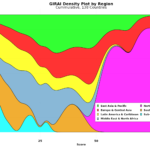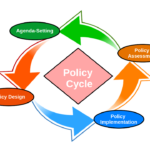Here is the final version of the interview I did for the above. The final text was edited by Aid Connect staff. A pdf version of the magazine that contains the interview is here.
Tell us about your background and experience
I’m the Global Lead and Senior Policy Advisor on ICT for Development and e-governance at UNDP’s Democratic Governance practice based in New York. Before joining the UNDP in 1993, I worked in academia in the United States. I am a Colombian national and hold a BA in sociology and a MA in Economics with a major in Economic Development. I also studied engineering for two years where I became familiar with computer programming.
For the past 20 years, I have supported the deployment and use of Information and Communications Technology (ICT) in nearly 100 developing countries to foster development agendas and promote social inclusion, working together with national governments, the private sector and civil society organisations.
I’m currently focusing on mobile technologies and social networks which can enhance access to public information, advance service delivery for under-served populations and promote the participation of stakeholders in public policy and decision-making processes. I’m also working on open government and open data and the use of cloud computing by developing countries.
Provide some insight into the United Nations Development Program (UNDP) and the work it is involved in globally.
The UNDP is the development network of the UN system. Since 1966 the UNDP has partnered with people at all levels of society to help build nations, withstand crises and drive and sustain the kind of growth that improves the quality of life for everyone. The organisation is present in more than 170 countries and territories and offers a global perspective and local insight to help empower lives and build resilient nations.
The UNDP is focused on helping countries build and share solutions in four main areas: poverty reduction and achievement of the Millennium Development Goals (MDGs), democratic governance, crisis prevention and recovery as well as environment and energy for sustainable development.
World leaders have pledged to achieve the MDGs, including the overarching goal of cutting poverty in half by 2015 – the UNDP’s network links and co-ordinates global and national efforts to reach these goals.
The International Network of Social Innovators for Human Development (INSIHD) launched in 2013 by the UNDP and Motorola Solutions recognises both the potential of mobile technologies for development and the need to build an innovation ecosystem to jointly tackle global development challenges. How has this initiative taken off and what are its successes to date?
The explosive growth of mobile technologies has provided fertile ground for fostering innovation in the global South. The new millennium has also brought forward the “democratisation of innovation” which has taken root in many developing countries. Local social innovators have taken matters into their own hands and are developing innovative solutions. However, many of these efforts still lack the required support to be mainstreamed into local and national development plans, scaled up to millions and replicated in different contexts.
In addition, dynamic and productive interaction between social innovators and development practitioners and local and national governments has not evolved as initially expected. As a result many of the innovations that have socioeconomic and governance impact are still not an integral part of development policies and programmes.
It was in this context that the INSIHD emerged, as an international network of social innovators to share knowledge across the globe, link with policy makers at national and regional levels and bring the voices of innovators to bear in development planning.
The network is still expanding and we’ve just had our first network gathering in Dakar. We are also expecting to launch national INISHD chapters in the second half of this year in Africa and Latin America.
How did the Mobile for Human Development (mobiles4HD) project come about and what are its key objectives?
Developing countries wishing to propel and sustain their development efforts should seriously invest in the generation of local capacities, knowledge and solutions that meet the existing and future demands of society. Such investments can foster greater resilience and thus strengthen development in line with international development goals such as the MDGs and the upcoming post-2015 development agenda.
And technologies can play a key role here. We should be mindful that this idea is not entirely new. We at UNDP have been supporting the use of ICT for development since the early 1990s. What has dramatically changed since then is the amazing diffusion of mobile technologies in the last 10 years or so around the globe – developing countries included. This in itself opens new opportunities to create and deploy new solutions to traditional and long-standing development gaps. Think education, health, political participation, social inclusion, etc.
The latest data suggest that there are now over 6 billion mobile subscribers in the world and over 80% of them happen to live in emerging economies. This is the fuel that makes mobiles for development run in a sustained fashion. But this does not mean that mobiles alone will solve all the issues. We should be a bit more modest here and acknowledge that other ingredients are needed to effectively tackle most of these challenges. Adequate policies, local capacity development, strengthening of local institutions, local innovation ecosystems, political will and stakeholder participation are a few we can mention here.
Has mobiles4HD been widely embraced by developing countries and what are some of the current projects underway?
I would say that most developing countries are embracing this idea, but in different ways. The uptake of mobiles4HD has been primarily driven, in many countries by local social innovators, many of whom are part of local communities, understand the issues first hand and have the trust of local stakeholders.
This innovation revolution, so to speak, has been facilitated by the fact that mobile technologies lower the barrier of entry for application developers who do not really need to be computer scientists to code a new app – this is in sharp contrast to the more traditional web platform development, for example.
In some countries, such as Kenya and Rwanda, governments have picked up on this and are trying to scale up and replicate successful mobile initiatives at regional and national levels, but in most countries this is certainly not the case. This is where the INSIHD is playing an active role.
We are on the verge of completing a report on mobiles for development in 2014 that presents trends and gaps in this space. For example, we have collected over 1,300 mobile apps that directly deal with issues related to poverty, governance, education and health. There is indeed a plethora of projects going on but we must also admit there is some duplication taking place.
With regards to applications over digital radio (e.g. telemetry, GPS tracking, email, etc.) how do you see private government networks and applications playing a role in his area?
This is a great question as from my viewpoint, it is relevant to poorer countries, especially Low Income Countries (LICs) and Least Developed Countries (LDCs) which together represent over 70 countries. This is because infrastructure development in fibre optics and broadband is still limited and even when it does exist, it is not affordable to those at the bottom of the pyramid.
Radio applications which have lower investment requirements are thus key. There seems to be a bit of a backlash against not using state-of-the-art technologies in many quarters. But this perspective seems to ignore that most people in this group of countries live in poverty and cannot afford to use the latest gadgets or technologies.
Using radio technologies can indeed make a big difference to the lives of those who have no other choice. Another idea is to combine the different technologies that we have available to deliver the goods and services that people need and demand. We do not need to be fundamentalists here. As long as we can help people improve their own lives using technologies as enablers for development, we are probably moving in the right direction.





